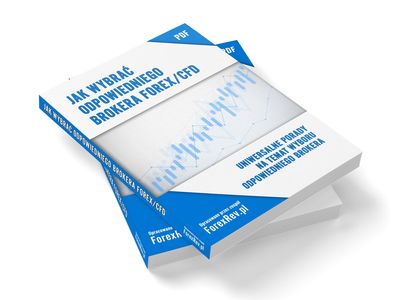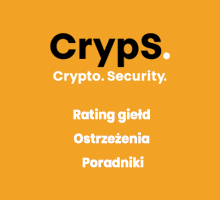Forex / CFD Investment Dictionary
Have you stumbled upon an unfamiliar trading-related word? Don’t know what it means? You’ve come to the right place! Check out our investment dictionary, which includes both popular industry definitions and trader slang.
Most of the definitions have detailed explanations, available by clicking on the name or on the text “(more…)”.
Are any definitions missing? Write to us.
Forex/CFD Dictionary
- A book / B book
- How a CFD broker executes an order. In practice, a broker can execute an order on the internal market (B book) or external market (A book) (more…)
- Fundamental Analysis (FA)
- one of the methods for analyzing financial instruments—their condition and the external environment. It is based on economic data, not market activity data (more…)
- Appreciation
- an increase in the value of the currency, which directly affects the increase in prices of goods and services (more…)
- Technical Analysis (AT)
- Technical analysis examines collective market behavior. It is primarily based on historical price behavior, i.e., price charts. It is based on the assumption that price is determined solely by supply and demand (more…)
- Quantitative Analysis
- studies and forecasts market behavior (including prices) using mathematical, statistical and econometric tools (more…)
- Australian (Aussie)
- a common name used by traders for the AUD/USD currency pair (more…)
- Arbitration
- a strategy that involves identifying an instrument whose price differs in two markets, then buying it and reselling it at a higher price (more…)
- Central Bank
- a public institution that implements the state’s monetary policy. It creates the money supply, thus influencing its demand (to some extent) (more…)
- World Bank
- Despite its name, it doesn’t operate like a typical bank. It operates through two specialized agencies, both aimed at helping developing and poor countries by providing funds for public purposes, such as education.
- Break Even Point (BE or BEP)
- a situation in which, after taking into account transaction costs, our revenues equal financial costs (more…)
- Broker
- An entity that intermediates the conclusion of offers on the capital market. For the service provided, the broker charges a commission, which depends on the value of the transaction and the type of financial instrument involved (more…)
- Bid/Ask Price
- bid – purchase price, ask – sale price. The bid price is always lower, the ask price is always higher.
The difference between the bid and ask price is the spread. The spread is the difference between two extreme values—the highest bid price and the lowest ask price (at which an investor is willing to enter into a transaction). - Commodity Futures Trading Commission (CFTC)
- The Commodity Futures Trading Commission (CFTC) is an independent U.S. federal agency established under the Commodity Futures Trading Commission Act of 1974. The CFTC regulates the futures market (also known as the derivatives market) (more…)
- Commodities
- English-language term for raw materials, i.e., physical objects grown or mined. Examples include precious metals, oil, and coffee.
- CPI (Consumer Price Index)
- Consumer Price Index. This basket of goods reflects the average consumer’s basket. It therefore examines the impact of inflation on everyday spending.
- CFD (contract for difference)
- a financial instrument between a long and a short party in which one party is obligated to cover the difference between the final and initial price. This difference constitutes a profit for the other party (more…)
- Macroeconomic data
- data used in fundamental analysis when estimating the impact of external factors (directly independent of the company’s activities) on a given company or financial instrument (more…)
- Dealer
- an entity that places orders on behalf of its client (both individuals and legal entities). Nowadays, orders are transferred and combined automatically using IT systems.
- Depreciation
- decline in the purchasing power of money (more…)
- Long position
- position denoting a buy order (more…)
- Liquidity Provider (LP)
- Liquidity providers are entities that provide access to liquidity, including retail brokers. These are often market makers and hedge interbank transactions. However, the largest liquidity providers are banks such as Deutsche Bank, UBS, Barclays, Morgan Stanley, Citi, and JPMorgan. These entities are also called Tier 1 Liquidity Providers (Tier 1 Liquidity Providers) or Tier 1 Prime Brokers.
- Divergence
- a situation in which two indicators predict different market conditions. Divergence often precedes a trend reversal.
- Financial leverage
- allows you to take a position that exceeds the value of the funds in your brokerage account. In other words, it uses your broker’s “capital” to enter into market transactions and profit from them ( more… )
- European Central Bank
- The European Central Bank (ECB) is the central bank of all countries whose monetary policy is based on the euro. Its primary task is to ensure price stability in the eurozone. Due to the euro’s high liquidity, its decisions have a profound impact on the entire economy – not just in Europe.
- Electronic Communication Network (ECN)
- This is a brokerage model often seen as the opposite of the MM model. ECN brokers are intermediaries that, in practice, accept orders from their clients and forward them to their liquidity providers.
- Exponential Moving Average (EMA)
- see moving average.
- Expert Advisor (EA)
- Expert Advisor is an automated trading program written in the MetaQuotes Language (MQL). It is designed for MetaTrader platforms. Depending on the platform version, EAs are programmed in MQL4 or MQL5. The program signals market changes and executes trades according to the assumptions we establish (more…)
- Equity – operating register balance
- It is the sum of the account balance and profit, less the loss. It therefore constitutes total capital because it consists of both free cash and invested funds (open positions). When we have no open positions at a given time, equity is equal to the account balance.
- Futures
- A derivative instrument operating similarly to a forward contract, with the difference that it is standardized and traded on an organized market. It is a contract that obliges the seller to deliver a given instrument at a given price at a given time. It is settled in cash (more…)
- Federal Reserve System colloquially Fed (Federal Reserve System)
- United States Central Bank (more…)
- Federal Open Market Committee (FOMC)
- Federal Open Market Committee. One of the five bodies of the Fed (more…)
- Figure
- in currency pair quotes, it is the second decimal place (so it is a penny, cent, etc.). It corresponds to 100 pips (price interest point) (more…)
- Fixing
- is the trading phase during the session, during which the opening and closing prices are determined (more…)
- Flashcrash
- A sudden, sharp change in demand for a given financial instrument, self-reinforcing in one direction, often triggered by a geopolitical phenomenon. Currently, the biggest flash crashes can be observed in the cryptocurrency market.
- Forward
- similarly to futures, it is a contract in which the seller is obliged to deliver a given instrument on a given day at a given price, while the long party is obliged to purchase it (more…)
- Price formations
- e.g., reversal and continuation patterns. Patterns visible on charts, used to forecast future price movements (more…)
- Flag formation
- This formation is considered one of the most reliable, next to the flag formation. It is useful when making buy or sell decisions. The formation typically takes from several trading sessions to about 3-4 weeks, making it a short-term formation (more…)
- Flag formation
- This is one of the patterns that signify a continuation of a trend. It is one of the more distinct patterns, right next to the pennant pattern. It allows you to clearly determine the prevailing trend. It often appears in the middle of strong price movements. It is most often marked by two vertical lines (more…)
- Wedge formation
- This pattern isn’t the easiest to recognize. However, this price formation allows for obtaining important information, and it’s also quite reliable. Therefore, an investor who manages to discover this pattern will be able to make bold moves that will help them generate profits or avoid losses (more…)
- Continuation formations
- e.g., triangles, flags, and pennants. They herald a continuation of the current trend.
- Continuation formations
- e.g., triangles, flags, and pennants. They herald a continuation of the current trend.
- Reversal formation
- e.g., head and shoulders, double and triple tops and bottoms. Formations announcing a trend reversal.
- Triangle formation
- It’s one of the basic patterns used in technical analysis. A specific triangle often indicates a continuation of a trend, but there are also neutral triangles, as well as very rare triangle formations that announce a trend reversal. This isn’t the most difficult pattern to spot, and a beginner investor should be able to learn to spot it quite easily (more…)
- Investment funds
- A form of collective investment that allows for the investment of funds deposited by fund participants. Each person who deposits a certain amount into the fund receives a share in it, which is evidenced by a certificate or unit. Typically, a large sum is not required to invest in the fund (more…)
- Gross Domestic Product / GDP
- The value of goods and services produced within a given period within a given country is one of the main measures of a country’s economic situation. It takes into account the geographical location and does not differentiate between the origin of capital (domestic or foreign).
- News trading
- a strategy that involves taking appropriate positions in response to macroeconomic events, hoping that they will have a significant impact on the price of a given instrument and allow the investor to achieve a quick profit (more…)
- Hedging
- Hedging against unfavorable price movements in a given financial instrument. It involves taking a position in a derivative instrument that is opposite to the one currently held. Its practical application, along with the results, is well-illustrated in the book “The Alchemy of Finance” by G. Soros (more…)
- High Frequency Trading (HFT)
- High-frequency trading involves concluding transactions as quickly as possible, and most importantly, faster than other market participants (more…)
- Dollar Index (USDX)
- A measure of the dollar’s value against a basket of currencies of the United States’ major trading partners. It measures the dollar’s strength relative to other global economies (more…)
- Turkey
- otherwise known as an indicator.
- Insider trading
- This term describes transactions in the securities of a publicly traded company by individuals who have access to confidential information within that company. Depending on the country, such activity may be viewed differently under different legal provisions and may even be punishable (more…)
- Time Interval (Time Frame, TF)
- a unit of time on a trading platform. The letter denotes the time interval, the number indicates the length of the interval, e.g., 30M – 30 minutes (more…)
- Cable
- GBP/USD currency pair (more…)
- Key reversal day
- (using the example of a downtrend) a pattern that occurs when the opening price reaches a new low and the closing price is above the previous day’s closing price. The greater the price range between the opening and closing prices, along with the higher the volume, the greater the likelihood of a trend reversal.
- Consolidation
- A situation in which the price moves within a constant, narrow price range for a period of time. In other words, it’s a situation where the price doesn’t change significantly for an extended period of time (more…)
- Adjustment
- a clear price movement in the opposite direction to the current trend.
- Cross rates (Cross bets, Crosses, Minor pairs, Minors)
- used to determine the value of two illiquid currencies relative to each other, based on a third currency, the USD (more…)
- Short position (Short, Sell)
- entered into when an investor expects the price of a given financial asset to decline. This way, the investor profits from a price drop. If the price of the instrument increases, the investor suffers a loss (more…)
- Indirect quotation
- the value of a foreign currency expressed in domestic currency.
- Direct quotation
- the value of the national currency expressed in foreign currency.
- LEI (Legal Entity Identifier)
- A unique identifier for legal entities engaged in financial transactions. It consists of 20 characters and is also classified/referred to as ISO 17442 (more…)
- Fibonacci numbers (Fibonacci sequence, Fibonacci numbers)
- (1, 2, 3, 5, 8, 13, 21, 34, 55, 89, 144…). As you can already see, it is constructed by adding the last two numbers together. The ratio of any number to the next is 62 percent. This percentage is also a common correction in price movement. The inverse of 62 percent is 38 percent—a figure used when forecasting corrections. The ratio of any number to the preceding number is therefore 162 percent—a percentage used to forecast the target level toward which the trend is heading.
- Trend Line (LT)
- determines the severity of the current trend. It is drawn below the lows in an uptrend and above the highs in a downtrend (more…)
- Advance-decline line (A/D line)
- market breadth indicator (more…)
- Flight
- A transaction worth 100,000 units of the base currency. A purchase of 100,000 USD/CAD would therefore represent 1 lot. There are also mini-lots (1/10 of a lot), micro-lots (1/100 of a lot), and nano-lots (1/1000 of a lot) (more…)
- Price gaps
- empty areas on a chart where no transactions have occurred. This often occurs during large and sudden price movements, such as during macroeconomic data releases (more…)
- Margin
- Margin is nothing more than the level of your funds in your broker account that secures the positions you have open at a given time ( more… )
- Margin Call
- A call to replenish your brokerage account equity. This system is activated when your account equity falls below a threshold set by your broker (more…)
- Market Maker (MM)
- A broker organizes its own market for orders placed by its own clients. Therefore, it is not an intermediary, but rather creates an internal market in which transactions are concluded. Often, the broker is the other party to such transactions, which can create conflicts of interest ( more… )
- MetaTrader
- One of the investment platforms that allows online trading on various markets, such as forex, futures, and CFDs (contracts for difference). It is one of the most popular programs used by many brokers and investors ( more… )
- International Monetary Fund (IMF)
- an organization operating under the auspices of the UN, whose main objectives are: promoting cooperation at the level of monetary policy, facilitating the achievement of sustainable growth in international trade, promoting the stabilization of exchange rates, and helping members experiencing difficulties in achieving a stable trade balance.
- Momentum
- an indicator showing the size of the price change (overbought or oversold) at a given time (more…)
- Oscillators
- Indicators that help determine the current stage of a trend. This measures the rate of change. If the oscillator reaches a new high, it indicates an overbought market; if it reaches a new low, it indicates an oversold market (a bear market). One of the most popular oscillators is the stochastic oscillator (more…)
- Options
- a derivative in which the buyer has the right (but is not obliged) to buy/sell a given financial instrument at a specific price within a specific time, while the issuer has the obligation to sell it (more…)
- Binary options
- This is a financial instrument that has become popular with investors in recent years. By purchasing a binary option, the investor attempts to predict whether the price of a given asset will rise or fall in the future. They are called binary options because they have only two possible outcomes – either the investor predicted correctly (in which case their capital increases), or if they are wrong, they lose all their capital (more…)
- Money M0, M1, M2, M3
- So-called monetary aggregates. They measure the amount of money in circulation in the economy. Increasing numbers indicate less liquid assets, and each aggregate includes the previous one. Depending on the country’s monetary policy, the classification of individual assets may vary slightly (more…)
- PIP (Price Interest Point, Percentage In Point)
- This is the fourth digit after the decimal point of the quoted currency. The exception is the yen, in which case it is the second digit after the decimal point. The value of a pip depends on the financial instrument. One pip is equal to 10 points (more…)
- Liquidity
- the possibility of relatively quick order execution at a predetermined, reasonable price at a given time (more…)
- Supply and Demand (Supply/Demand, S/D)
- demand means the need for a given product or instrument on the part of buyers, while supply means the willingness to supply it (at a given price) (more…)
- Monetary policy
- It is part of a country’s economic policy, which, along with fiscal policy, constitutes a pillar of the country’s economic stability. Monetary policy is intended to influence various markets in the national economy, as well as the state of the currency, prices in the country, unemployment, and the inflation rate. Good monetary policy management can improve the country’s economic situation (more…)
- Stop hunting
- a situation in which a broker deliberately manipulates the rate to activate a STOP LOSS order (more…)
- SWAP points
- the cost of maintaining a position arising from the difference in currency interest rates (more…)
- Price Action (PA)
- Making investment decisions based on the price behavior of a given instrument. PA assumes that price movements are nothing more than information about investor sentiment, so to generate profits, we should react to them in a timely manner (more…)
- Commission
- percentage due to the broker for the execution of the transaction we placed (more…)
- RGR (Head and Shoulder Formation, SHS, Shoulder-Head-Shoulder)
- This indicates a trend reversal. A situation in which the upward trend (higher highs and higher lows) begins to lose momentum. After a certain period of time, supply and demand will reach equilibrium (equal to each other – the second arm). After the equilibrium ends, the support line is broken, and lows begin to form lower and lower (more…)
- ROC (Rate of Change)
- One of the most popular indicators used in technical analysis, it shows how the price of a security we’re examining has changed over a specific period. It is classified as a momentum indicator, also known as a momentum indicator (more…)
- Rolling
- extending the expiry of a contract by closing a transaction with a near expiry date and opening a new one on the same contract (with a later maturity than the first contract) (more…)
- Bull Market
- It is characterized by the highest economic growth and investment. Optimism is further fueled by rising wages and low unemployment. Increased demand results in rising prices of financial instruments (more…)
- Bear Market
- a period of stock sell-offs. Investors view the market pessimistically, and the population avoids high consumption (more…)
- Market sentiment (Consumer sentiment)
- investors’ perception of the current market situation. It reflects their beliefs about future price developments. Since consumers drive demand and
supply, even when the reasons are irrational, is an important indicator of current market sentiment. - Setup
- A sequence of investment signals leading to a buy/sell decision. The more signals in a setup, the greater the probability of a successful investment.
- Scalping
- quick execution of short-term transactions aimed at profit with minimal price movement (more…)
- Slippage
- It most often occurs during periods of major turmoil in the financial world, when a large number of orders flow into the market and the broker is forced to open a transaction with “slippage”, i.e. at a price usually slightly worse than expected (more…)
- Spot
- The spot market is a type of market in which securities, commodities, raw materials, or foreign currencies are traded in spot transactions and delivered directly to the buyer. The term also refers to the current price of commodities and raw materials, such as gold or silver. It also refers to trading operations that are conducted immediately, rather than deferred (more…)
- Spread
- the cost of concluding a transaction. The spread is the difference between the ask (buy) and bid (sell) prices, expressed in pips (more…)
- Unemployment rate
- The unemployment rate is a statistical value that describes the level of unemployment in a given society, most often it is a country, but in Poland it is also calculated for voivodeships and counties (more…)
- Inflation rate
- It’s the percentage change in the general price level, typically calculated on an annual basis. The year under review is compared to a base year, which is usually the year preceding the year for which inflation is being measured. The weighted average price is determined by the weighted average of prices for goods and services in the economy (more…)
- Stop Out
- The ultimate solution used by brokers when our investments prove unsuccessful and we experience increasing losses. This is another mechanism following the Margin Call (more…)
- Straight-Through-Processing (STP)
- A system in which transactions are automatically matched electronically, without human intervention. Such transactions are executed on a liquid market (interbank market) alongside a counter-transaction from a liquidity provider. The transaction is conducted directly, with the broker acting solely as an intermediary and not as a party to the transaction. The STP model, therefore, is free from conflicts of interest (similar to the ECN model). In this case, however, the broker typically has only one liquidity provider (more…)
- Swing trading
- An investment method with a time horizon ranging from a few days to 3-4 weeks. It often combines the use of technical and fundamental analysis (more…)
- Trading Signal
- a market event or the emergence of a specific investment setup that helps investors make decisions regarding the purchase/sale of a financial instrument (more…)
- Moving Averages (Moving Average, SMA, Simple Moving Average)
- a technical indicator that is an average of a set of data over a single, specified period. Most often, this is a 10-day period (more…)
- Japanese Candlesticks (Candlestick Charts, Sakata Charts, Candlestick)
- One of the three most popular chart types used in technical analysis. Compared to line and bar charts, it is more complex. Japanese candlestick charts provide information about the opening price, closing price, high price, and low price for a given session or period (more…)
- Target
- the price at which a given investment will meet the investor’s expectations.
- Dow Theory
- As market participants, we are able to predict future price movements and market events with some degree of probability. Dow Theory is based on assumptions such as: stock market manipulation is impossible in the long term, market averages – indices – discount everything, and we are unable to predict the future with absolute probability (more…)
- Tick
- the minimum price change, regardless of the value of this change (how much the change was). This independence distinguishes a Tick from a point (more…)
- Trailing Stop (TS, trailing/moving Stop Loss)
- Modifying a stop loss order, often called a “moving stop loss.” This automatically adjusts the price limit as the market price changes. This allows us to constantly pursue larger, additional profits (more…)
- Take Profit (TP)
- placing orders to close transactions with a profit (generally) at a pre-defined price level. In other words, an open transaction will close with a profit when the price reaches a specified level (more…)
- Trend
- the direction in which prices are heading, considered in the perspective of different time frames (long, medium and short term) (more…)
- Trade trigger
- A capital market reaction trigger is any type of order that meets the conditions for an automated transaction. It most often results directly from the market situation and the price of a financial instrument. Triggers are used to automate simple transaction processes, such as selling when the price reaches a desired and predicted level.
- Base currency
- first currency in a currency pair, e.g. AUS/PLN – base currency is AUS.
- Quote currency
- The second currency in the quote, e.g., AUS/PLN, is the quote currency. This indicates how many zlotys we have to pay for one Australian dollar. These are typically less liquid currencies.
- Exotic currency
- A currency characterized by low liquidity, typically originating from less developed markets characterized by lower liquidity. It is characterized by high volatility, which also means higher risk, making it recommended for more experienced traders. Investing in it often involves the use of cross rates.
- WIBOR (Warsaw Interbank Offered Rate)
- The interest rate (reference rate) for loans on the interbank market in Warsaw. The loan interest rate consists of the WIBOR rate plus a margin imposed by the bank. It is set each business day at 11:00 AM.
- WIBID (Warsaw Interbank Bid Rate)
- deposit interest rate on the interbank market in Warsaw. Like WIBOR, it is set every business day at 11:00 AM.
- Trading volume
- the sum of units of a given financial instrument that changed hands in a selected period of time (more…)
- Support/Resistance (S/R)
- points predicting a trend reversal or continuation at a given point. Support levels are below the current price, while resistance levels are above (more…)
- Bollinger bands
- A technical analysis tool used to identify the lows and highs occurring in a trend. The bands are placed two standard deviations above and below the 20-period moving average. The upper band represents a resistance line, the lower band a support line (more…)
- Money Management
- An exceptionally broad and individual concept, yet based on a number of common principles applied by every rational investor. These principles protect the investment against sudden loss of funds caused by a lack of knowledge or negligence on the part of the trader (more…)
- Limit order
- contains a price limit at which a transaction can be concluded. A limit order for a buy transaction can only be executed at or below the specified limit price, or at a price equal to or higher for sell orders.
- STOP order (Stop Loss, Stop Limit, SL)
- a type of order containing an activation limit. We distinguish between STOP Limit and STOP Loss orders. A Stop Loss order is the most commonly used security for leveraged transactions (e.g.
forex) which closes the transaction when the price falls/rises to a certain level (more…) - Market Volatility
- A measure of risk in financial markets. It indicates the magnitude of the change in price/rate. The greater this change, the more uncertain the reliance on that rate becomes. This is because the rate deviates more from the average deviation, exposing the trader to greater risk (more…)

















